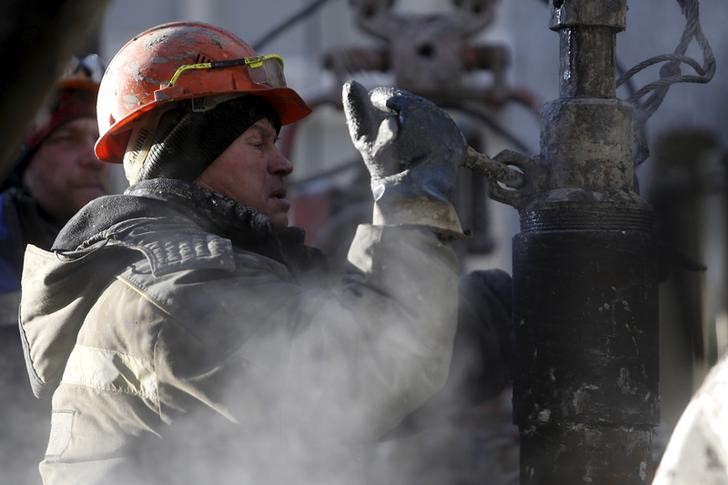* Market expects extension of production cuts to cover all of 2018
* Soaring U.S. output undermines OPEC's efforts to tighten market
* U.S. production fast approaching 10 million barrels per day (Adds OPEC meeting schedule, updates prices)
By Henning Gloystein
SINGAPORE, Nov 30 (Reuters) - Oil markets were cautious on Thursday ahead of an OPEC meeting in Vienna, with producers set to debate an extension of the supply-cut agreement that came into effect in January with the goal of tightening supplies and propping up prices.
The Organization of the Petroleum Exporting Countries (OPEC) will be meeting at its headquarters in the Austrian capital, along with ministers from other oil producing countries, most importantly Russia. is scheduled to hold an open session, including media, at 10 a.m. in Vienna on Thursday (0900 GMT), before going into a closed session at noon, according to a tentative programme on OPEC's website. Non-OPEC ministers are set to join at 3 p.m., followed by a joint press conference after the meeting.
Spot Brent crude oil futures LCOc2 , the international benchmark for oil prices, were at $62.74 a barrel at 0428 GMT, up 21 cents from their last close.
U.S. West Texas Intermediate (WTI) crude futures were at $57.41 a barrel, up 11 cents.
Trading activity was low during Asian trading hours and ahead of the meeting.
"Asia has unsurprisingly ... concluded that things are best left well alone until we hear from OPEC and non-OPEC later today," said Jeffrey Halley, analyst at futures brokerage OANDA.
While there has not been an official statement, OPEC and Russia seem ready to prolong their oil supply cuts until the end of 2018. The cuts were put in place last January and are set to expire next March. extension may include a review in June should healthy demand amid ongoing supply restraint overheat the market.
"The current consensus is that members will agree on an extension to the production cuts but the duration of the extension is uncertain," said William O'Loughlin, investment analyst at Rivkin Securities.
ANZ bank said "anything less than a nine-month extension to the current production agreement could see the recent sell-off accelerate."
SOARING U.S. PRODUCTION
One of OPEC's biggest concerns is rising output in the United States, largely due to shale drillers, who are fast gaining market share - especially in Asia, the world's biggest consumer region - and are undermining the producer club's efforts to tighten the market.
U.S. crude oil production C-OUT-T-EIA hit a new record of 9.68 million barrels per day (bpd) last week, according to government data released on Wednesday. EIA/S
Rystad Energy, a consultancy, said it expects U.S. oil production to reach 9.9 million bpd in December.
That would bring U.S. output close to levels of top producers Russia and Saudi Arabia.
Despite this, U.S. crude inventories C-STK-T-EIA have fallen by more than 15 percent from their March record to 453.7 million barrels, below levels at this time in 2015 and 2016, although they remain above five-year averages.
Traders said the fall in inventories was largely down to a two-week interruption of the Keystone pipeline bringing Canadian crude to the United States, and as American companies increasingly export excess crude.
<^^^^^^^^^^^^^^^^^^^^^^^^^^^^^^^^^^^^^^^^^^^^^^^^^^^^^^^^^^^ GRAPHICS: U.S. crude oil production and inventories
http://reut.rs/2zQq77e
^^^^^^^^^^^^^^^^^^^^^^^^^^^^^^^^^^^^^^^^^^^^^^^^^^^^^^^^^^^>
